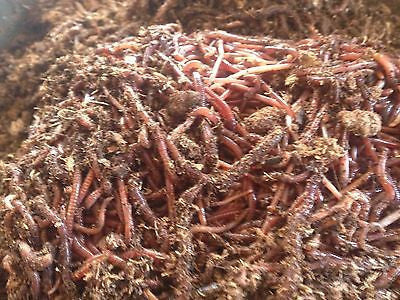The Best Guide To Red Wiggler Express
The Best Guide To Red Wiggler Express
Blog Article
The Only Guide for Red Wiggler Express
Table of ContentsGet This Report on Red Wiggler ExpressThe Single Strategy To Use For Red Wiggler ExpressGetting The Red Wiggler Express To WorkThe Single Strategy To Use For Red Wiggler Express
With the worldwide press for sustainability and with eco-friendly practices growing in popularity, individuals are ultimately coming about and recognizing the environmental advantages of red wiggler worms and composting. In this write-up, we'll review how vermicomposting supports lasting gardening and the ecological advantages of red wigglers and various other earthworms.
This is the short of it. If you wish to read extensive regarding red shakes, we have a whole article committed to them here. Currently, allow's get involved in the nitty-gritty of how these worms sustain lasting gardening practices and benefit the environment: Worm composting resembles a health spa day for your dirt.
When integrated right into your yard dirt, these spreadings enhance its structure, oygenation, and water retention. This helps with plant growth and wellness and does not call for the usage of any kind of chemicals. Did you understand that organic waste makes up a significant portion of land fill material?
By diverting your kitchen area scraps and lawn waste right into a worm composting bin, you're effectively reducing the amount of organic waste that ends up in landfills. Fail to remember concerning chemical fertilizers worm castings are the actual bargain.
The smart Trick of Red Wiggler Express That Nobody is Talking About

Mix the nutrient-rich worm castings right into your garden dirt or utilize them as a top clothing for potted plants. In a globe where sustainability is ending up being increasingly important, red wigglers beam as unrecognized heroes of horticulture.
Composting may look like old information, yet doing it with a bin full of worms possibly doesn't. Red wiggler worms supply terrific benefits to the organic garden enthusiast, creating both a natural fertilizer and an efficient chemical. And they consume your cooking area scraps. The worth of red wigglers, a.k (Red Wigglers For Bait).a. Eisenia fetida, hinges on their excrement, referred to as worm castings.
Worm castings might be acquired at shops such as SBS in Vineyard Place or Winery Gardens in West Tisbury, yet to raise the worms in a garden compost bed and harvest your own castings is far more enjoyable. The job of these worms is a component of lasting living. Red wigglers are native to steed manure, where they tunnel to lay eggs.
Some Known Questions About Red Wiggler Express.
(http://www.greeleylocal.com/pet-services/red-wiggler-express)They can't make a lot of it." He covers the container with straw, then an item of old carpeting. "They like the heat," he states. Lynn clarifies the production of spreadings and two uses: as a fertilizer and as a pesticide. "They absorb decaying matter. It goes through them and includes calcium to make this rich earth," she says.
"We call it golden tea," states Lynn. "I did it to see if it would make a difference on white flies and aphids. My rosemary had a mold and mildew or fungus. After I splashed, promptly it looked better." The red wiggler is a prodigious dog breeder, laying eggs as frequently as when a week.
It takes three to five months for a child worm to reach sex-related maturation and the adult size of three inches. Their lifetime is four to 5 years unless obviously they are made use of for lure. As freshwater fish bait, wigglers wriggle responsible and survive underwater longer than conventional earthworms.

As one of the Epigeic class of compost worms, the normally does not appear in dirts. Instead, it thrives within the dirts of leaves litter, manure, and decaying vegetation. The worm is red or reddish-brown in shade and has a smooth, round shape. The clitellum, or saddle-like reproductive gland, is located concerning two-thirds of the way down the worm's body.
A red wiggler worm can grow up to 4 inches in size however is typically only about 2 and a fifty percent inches. The worm has a little mouth located at the front of its head. It also has small bristles, called setae, which aid the worm action and support itself to surface areas.

Report this page